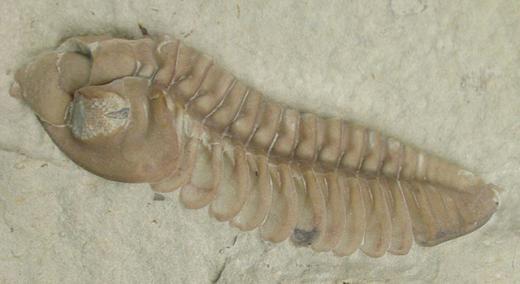Kainops invius, lateral and ventral. Credit: Moussa Direct Ltd. archive
Five hundred million years ago, the oceans teemed with trillions of trilobites—creatures that were distant cousins of horseshoe crabs. All trilobites had a wide range of vision, thanks to compound eyes—single eyes composed of tens to thousands of tiny independent units, each with their own cornea, lens, and light-sensitive cells. But one group, Dalmanitina socialis, was exceptionally farsighted. Their bifocal eyes, each mounted on stalks and composed of two lenses that bent light at different angles, enabled these sea creatures to simultaneously view prey floating nearby as well as distant enemies approaching from more than a kilometer away.
|
ADVERTISEMENT |
Inspired by the eyes of D. socialis, researchers at the National Institute of Standards and Technology (NIST) have developed a miniature camera featuring a bifocal lens with a record-setting depth of field (the distance over which the camera can produce sharp images in a single photo). The camera can simultaneously image objects as close as 3 cm and as far away as 1.7 km. A computer algorithm corrects for aberrations, sharpens objects at intermediate distances between these near and far focal lengths, and generates a final all-in-focus image covering this enormous depth of field.
…

Add new comment